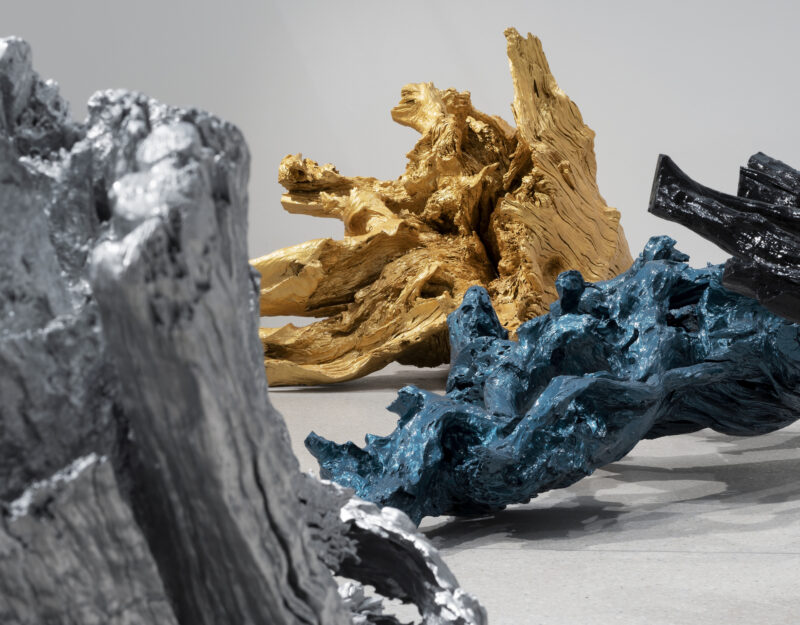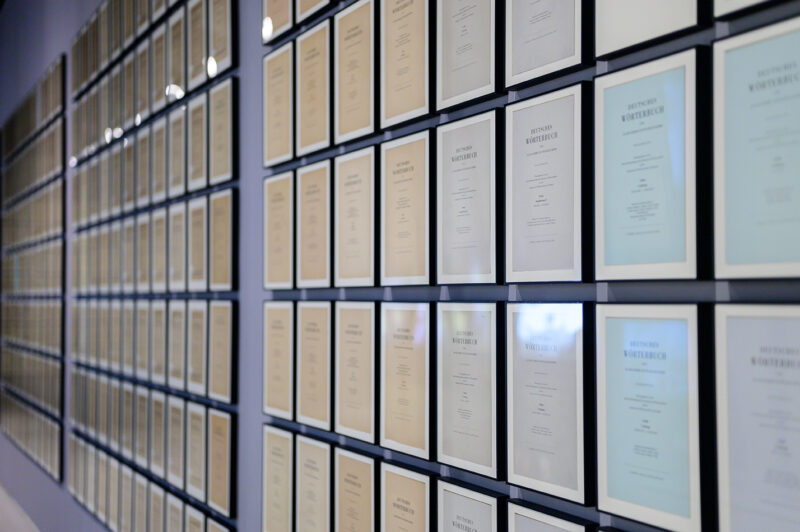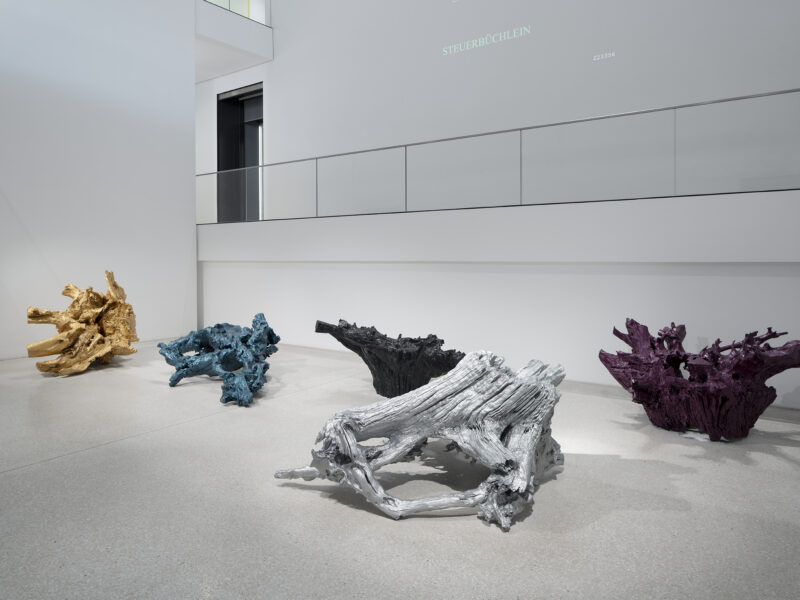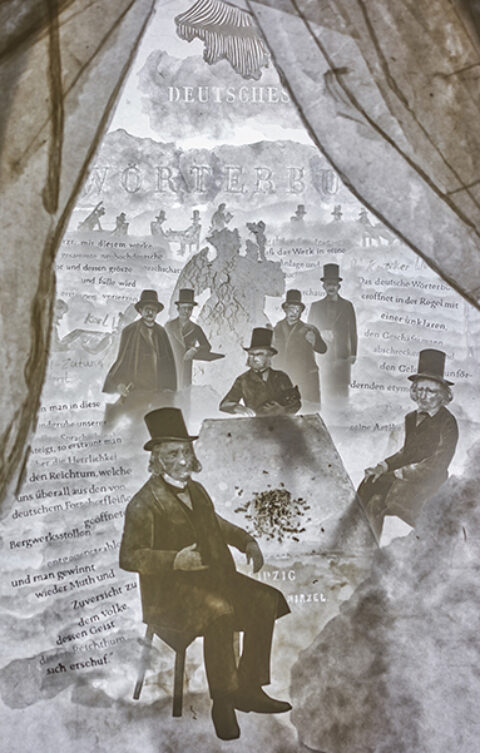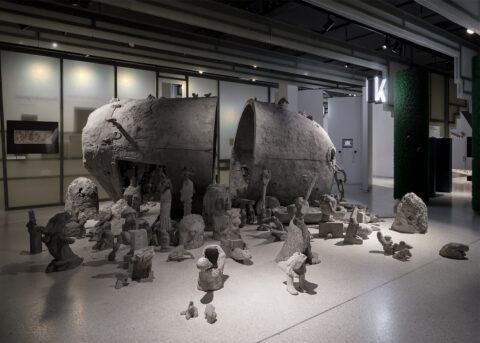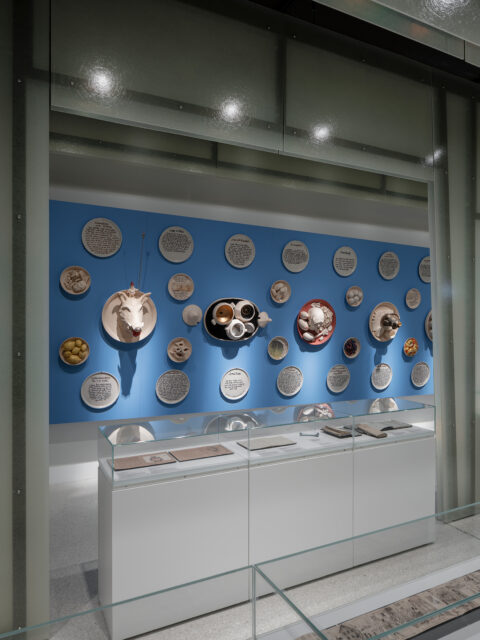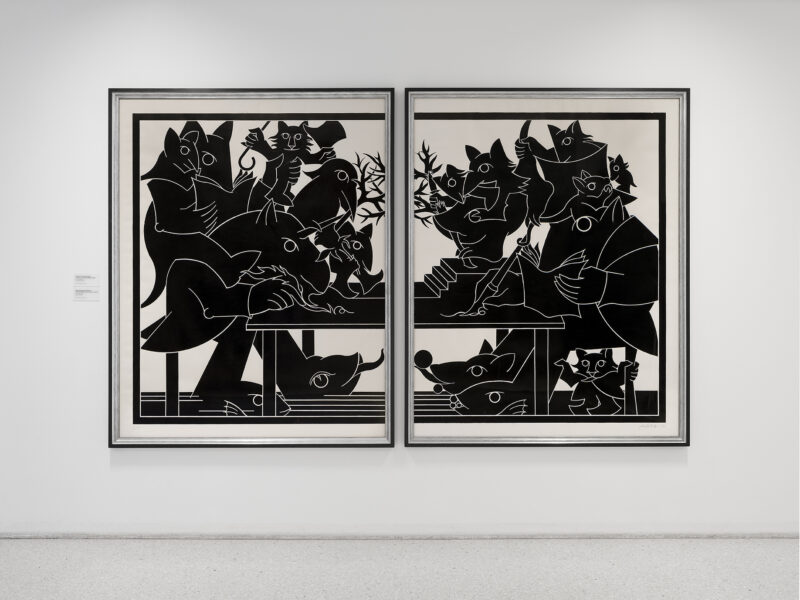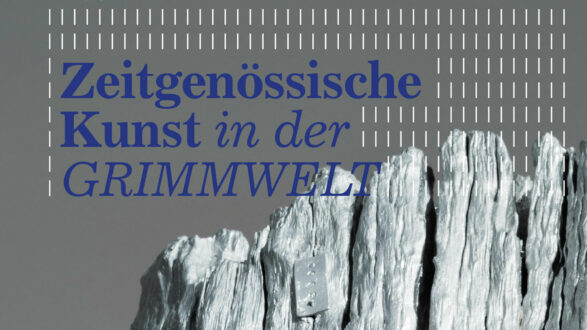- Menu
- Today
-
Next event
»Ich, das Tier«
Special Exhibition
I, ANIMAL
Permanent Exhibition
GRIMMWELT adventure space
A new GRIMMWELT publication shows why contemporary art is a central part of the venue’s exhibition concept.
Colored Roots, Ai Weiwei, 2009–2015
© GRIMMWELT Kassel | Foto: Nicolaus Wefers
buch der wörter / random reading, hologramm, Ecke Bonk, 2002–2016 2/3
© GRIMMWELT Kassel | Foto: Sascha Mannel
“You might come away with the impression that the perspective of a conceptual artist like Ecke Bonk was needed to make the Grimms' work on the Deutsches Wörterbuch visible to the general public,” adds the director.
The seamless fit between contemporary art and the work of Jacob and Wilhelm Grimm is also apparent on the lower level, at the entrance to the GRIMMWELT permanent exhibition. Located here are five, seemingly random-looking colored tree roots by Chinese artist Ai Weiwei, whose connection to Kassel also originates with the global-minded art show. In 2007, several of the artist’s contributions were shown at documenta 12; his work Template, installed on the Karlswiese in front of the Orangery, caused a stir because it had collapsed even before the opening and was deliberately not rebuilt by the artist.
Colored Roots, Ai Weiwei, 2009–2015
© GRIMMWELT Kassel | Foto: Nicolas Wefers
Ai Weiwei created the installation Colored Roots for GRIMMWELT after receiving the Glas der Vernunft award in 2010 and subsequently deciding to donate a specially made work to the city of Kassel. “The donation was incorporated into the new GRIMMWELT concept,” says Sauerwald. The roots were produced in several phases in China, shipped to Germany and then sprayed with automotive paint here. The roots might seem random, but only at first given how they “complement research into the etymological ‘roots’ of Brothers Grimm linguistics in a cross-cultural way,” as art historian Ellen Wagner elaborates in the brochure Contemporary Art at GRIMMWELT.
Ai Weiwei’s work Colored Roots was not the only work developed specifically for the exhibition venue. Ukrainian artist Alexei Tchernyi also created fourteen Dioramas for the permanent exhibition—three-dimensional paper artworks narrating the history of the Deutsches Wörterbuch in a wonderfully poetic manner. The works are a highlight of the permanent exhibition.
Dioramas, Alexej Tchernyi, 2014/2015
© GRIMMWELT Kassel | Foto: Nickolas Frank
Märchenbombe, Lutz & Guggisberg, 2014–2015
© GRIMMWELT Kassel | Foto: Nicolas Wefers
Banquet Table Tales, Antoni Miralda, 2015
© GRIMMWELT Kassel | Foto: Nicolas Wefers
Kassel artist Albert (Ali) Schindehütte also created a work for the new building: The 2012 Diptychon der Märchenbrüder zu Ehren von Jacob und Wilhelm Grimm (Diptych of the fairy tale brothers created in honor of Jacob and Wilhelm Grimm), which has been displayed in the entrance area since the opening of the building.
Diptych, Albert (Ali) Schindehütte, 2012
© GRIMMWELT Kassel | Foto: Nicolas Wefers
“Contemporary art can shed light on many things and build marvelous bridges,” says Jan Sauerwald. At the same time, contemporary art continues to shape the GRIMMWELT concept today as well as create unexpected effects. Special exhibitions, such as imPOSSSIBLE. The magic of wishes (2022), or earlier shows like Im Dickicht der Haare (2015), were influenced by contemporary art positions.
This is likely also why the new exhibition venue was extremely well received by critics after it opened. From Deutschland Radio Kultur in September 2015: “GRIMMWELT Kassel is a Gesamtkunstwerk of letters and words, of well-placed gems and expansive visions, of modern art and recollections of archaic myths. A successful gateway into the ‘Grimm cosmos’—consisting, after all, primarily of books.” The British newspaper The Guardian even declared GRIMMWELT one of the “Ten of the best new museums” in December 2015.
“We elicit waves of enthusiasm among exhibition-loving audiences,” remarks Jan Sauerwald. But the concept is also very demanding and some visitors are perplexed—also because of the contemporary art, which might not fit in with the work of the Brothers Grimm at first glance.
The new brochure is intended for all those interested in contemporary art. Its purpose is “to better communicate our approach to showing contemporary art in exhibitions at GRIMMWELT and, where necessary, inspire visitors about contemporary art at GRIMMWELT,” explains Jan Sauerwald. And along the way, you can learn interesting details about the artists’ works and biographies. For instance, who would have known that German conceptual artist Ecke Bonk was born in Cairo?
Author: Amira El Ahl
available in the GRIMMWELT store
Edited by Jan Sauerwald for the GRIMMWELT Kassel gGmbH
Authors: Jan Sauerwald | Ellen Wagner
Softcover, 64 pages
German | English
6,90 €
